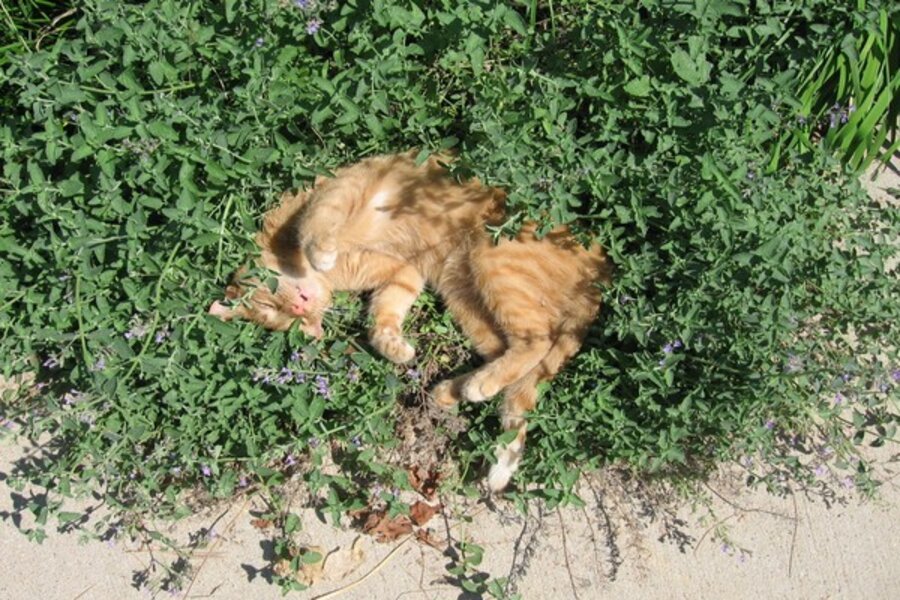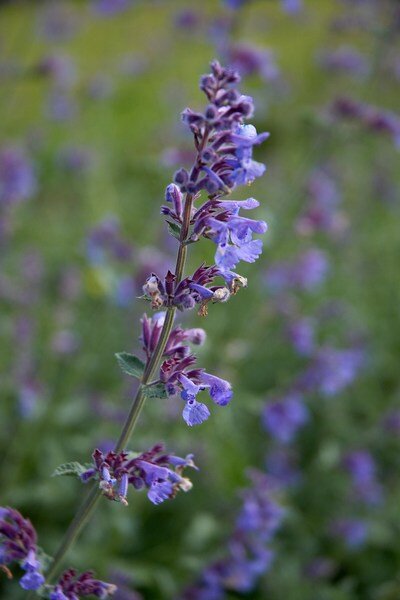Hybrid catmints: Cool cats in your landscape
Loading...
Included in the shipment of plants I received this past Friday were several members of the catmint family. Since I’m already hooked on these beautiful plants, these new additions were welcome new members of my outdoor family.
If you are looking for a vibrant, colorful powerhouse of a perennial, than look no further than hybrid catmint.
While it is true that there are numerous members of the catmint clan – some adored by humans, some favorites of felines – without a doubt, the notable star of any garden is one called hybrid catmint (Nepeta x faassenii) and its various cultivars.
For those who are into lavender or close to lavender-colored blossoms, it’s very likely that hybrid catmint has already found a spot in your garden. But for those who may not be familiar with this perennial, Nepeta x faassenii cultivars make for some rather spectacular ornamental plants in the landscape.
Hybrid catmint offers attractive aromatic foliage and misty clouds of tiny flowers. The individual grayish-green leaves are small, soft, and slightly pointed. They’re set on long, lax stems topped with spikes of diminutive lavender-purple to blue tubular flowers, creating a lacy haze atop foliage cushions that make them the perfect choice for front of the border plantings.
To be fair, catmint is also available in white or pink flowers, but I’m especially fond of the lavender-colored ones.
Keep them purring
For sheer endurance in the heat and drought of our hot summers, which usually obliterate most other perennials, they are standouts. No matter what the weather may creatively throw at them, hybrid catmints prove they are carefree and reliable performers from mid-June right through the first frost.
Members of the Lamiaceae, or mint, family, these exuberant growers, hardy in USDA Zones 3 through 8, they are also unfazed by harsh winters and lean or clay soils. Catmints attract pollinating insects, perform well in hot, dry sites and, best of all, are for the most part, deer- and rabbit-resistant.
And like all cats, they love basking in the sun and absolutely abhor getting their feet wet – so, the only conditions catmints won’t tolerate are deep shade or poorly draining soil.
Beautiful garden additions in their own right, catmints also play well with other plants in perennial beds as fillers, bringing some much needed cool color shades to hot summer borders.
According to the Perennial Plant Association, which named the cultivar ‘Walker’s Low’ as the 2007 Perennial Plant of the Year, you can pair ‘Walker’s Low’ with foxgloves, pinks, bearded iris, and peonies for a scene straight out of your grandmother’s garden.
Catmints are clump-formers whose spread, though neither rampant nor aggressive, is slow but relentless. To keep them in check, divide clumps every few years in early spring.
To keep these plants flowering through the summer until fall’s first frosts, prune them back by two-thirds when the first flush of flowers fade. To propagate the plant, use divisions or rooted cuttings. Cut back plants to the ground late winter or early in the spring.
Some notable cultivars
‘Walker’s Low’ – Despite its name, this catmint is anything but low. Named for a site in Ireland where it was discovered, this cultivar can reach three feet in height with about the same spread, though it does tend to flop over and sprawl. It has deep lavender-blue flowers that bloom profusely in early summer and then off-and-on throughout the rest of the growing season.
‘Six Hills Giant’ -- A large, vigorous, yet impressive, plant sporting equally large, impressive flower spikes of violet-blue flowers. A catmint on steroids (three feet high and 30 inches wide), this is a reliable bloomer that can add visual sturdiness to any border.
‘Kit Cat’ (also sold as ‘Kit Kat’) – A truly floriferous dwarf cultivar that grows in spreading mounds to only 15 inches in height, it sports interesting two-lipped, almost true-blue flowers, making it the perfect choice for rock gardens, bed edgers, or containers.
‘Select Blue’ – Another shorter cultivar, ‘Select Blue’ is a bluer version of ‘Kit Cat’.
‘Blue Wonder’ - A midget by comparison to most, ‘Blue Wonder’, at 12 inches in height, is a spectacular ground cover, which creates a soft grey mat smothered in blossoms in summer. One of the best plants for perennial bed edging or underplanting of rose beds. Unfortunately, cats enjoy this cultivar as much as they do catnip.
Editor's Note: Read more about catmint at Catmint is purrfect with roses.
-----
Betty Earl, the Intrepid Gardener, is one of more than a dozen gardening experts who blog regularly at Diggin' It. She's the author of 'In Search of Great Plants: The Insider’s Guide to the Best Plants in the Midwest.' She also writes a regular column for Chicagoland Gardening Magazine and The Kankakee Journal and numerous articles for Small Gardens Magazine, American Nurseryman, Nature’s Garden, and Midwest Living Magazine, as well as other national magazines. She is a garden scout for Better Homes and Gardens and a regional representative for The Garden Conservancy. To read more by Betty here at Diggin' It, click here.








